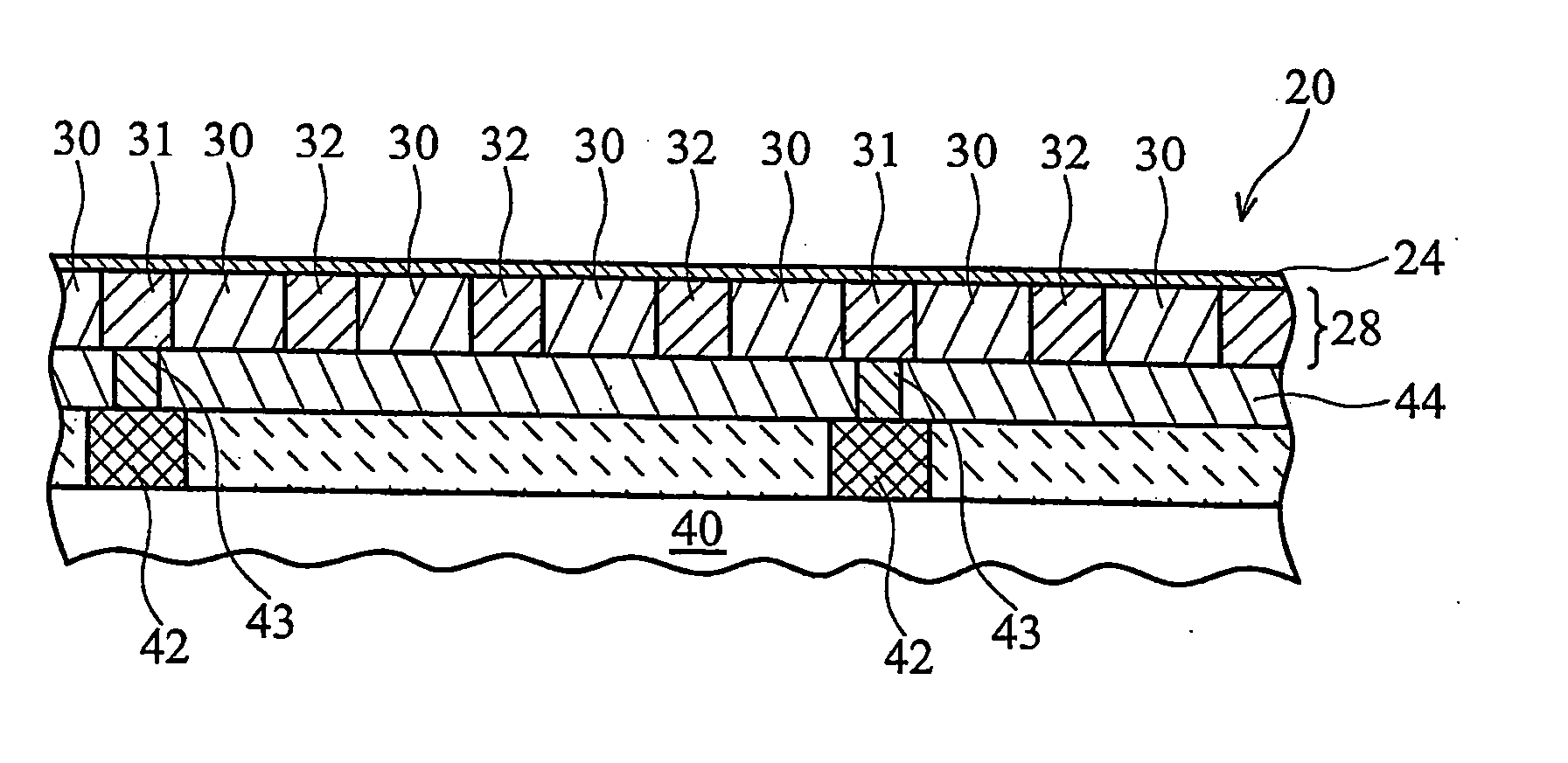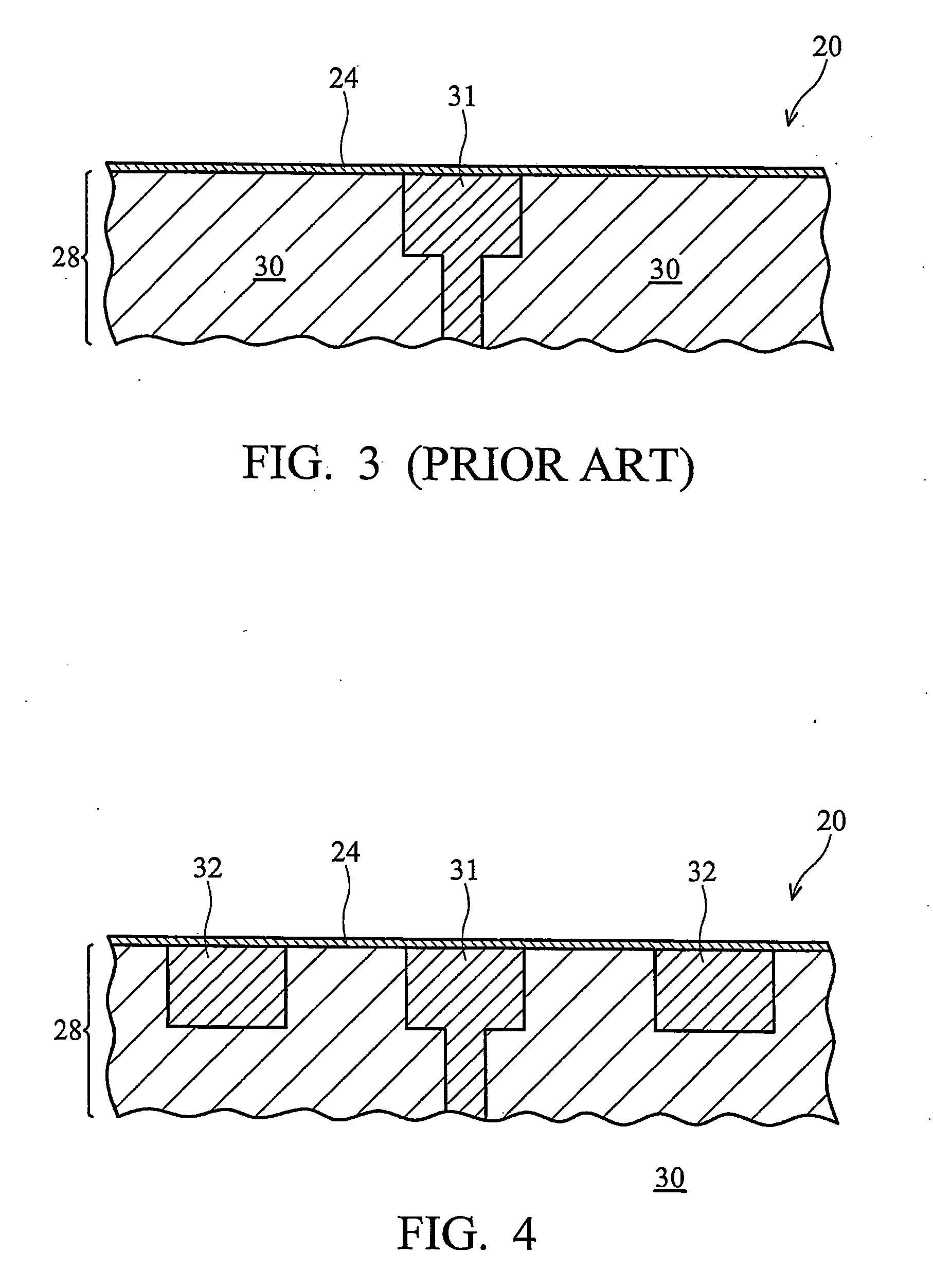Method and structure for improving adhesion between intermetal dielectric layer and cap layer
a dielectric layer and cap layer technology, applied in the direction of semiconductor devices, semiconductor/solid-state device details, electrical apparatus, etc., can solve the problems of poor adhesion between the low-k material and its neighboring structures or layers, high thermal expansion rate, and low thermal conductivity relative to neighboring structures and layers, so as to reduce excessive stress and eliminate delamination
- Summary
- Abstract
- Description
- Claims
- Application Information
AI Technical Summary
Benefits of technology
Problems solved by technology
Method used
Image
Examples
Embodiment Construction
[0019] Referring now to the drawings, wherein like reference numbers are used herein to designate like or similar elements throughout the various views, illustrative embodiments of the present invention are shown and described. The figures are not necessarily drawn to scale, and in some instances, the drawings have been exaggerated and / or simplified in places for illustrative purposes only. One of ordinary skill in the art will appreciate the many possible applications and variations of the present invention based on the following illustrative embodiments of the present invention.
[0020] Generally, an embodiment of the present invention provides a scheme and method of improving adhesion between an IMD (inter-metal dielectric) layer and a cap layer in contact therewith in a semiconductor interconnect structure. FIG. 2 is a cross-section view for part of a semiconductor interconnect structure 20 for a first embodiment of the present invention. The interconnect structure 20 of FIG. 2 i...
PUM
 Login to View More
Login to View More Abstract
Description
Claims
Application Information
 Login to View More
Login to View More - R&D
- Intellectual Property
- Life Sciences
- Materials
- Tech Scout
- Unparalleled Data Quality
- Higher Quality Content
- 60% Fewer Hallucinations
Browse by: Latest US Patents, China's latest patents, Technical Efficacy Thesaurus, Application Domain, Technology Topic, Popular Technical Reports.
© 2025 PatSnap. All rights reserved.Legal|Privacy policy|Modern Slavery Act Transparency Statement|Sitemap|About US| Contact US: help@patsnap.com



